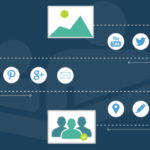Introduction
Explanation of PPC advertising and its relevance to e-commerce: Introduce PPC advertising, explaining its basic concept and why it is particularly effective for e-commerce businesses.
Overview of the benefits of PPC for boosting sales: Highlight the advantages such as immediate traffic, targeted audience, and measurable results.
Understanding PPC Advertising
Definition and basic concepts of PPC: Explain what PPC is, how it operates on a cost-per-click model, and its core components.
How PPC works: bidding, ad placement, and payment: Describe the auction system for ad placements, how bids determine ad positions, and the payment process.
Key PPC platforms (Google Ads, Bing Ads, Facebook Ads): Introduce major PPC platforms, emphasizing their unique features and user bases.
Setting Up Your PPC Campaign
Identifying your e-commerce goals: Discuss the importance of setting specific, measurable goals like increasing sales, acquiring new customers, or boosting brand awareness.
Choosing the right PPC platform: Guide readers on selecting the best platform based on their target audience and product type.
Setting a budget and bid strategy: Provide tips on determining an appropriate budget and choosing between bidding strategies like manual bidding or automated bidding.
Keyword Research and Selection
Importance of keywords in PPC: Explain the role of keywords in triggering ads and reaching potential customers.
Tools for keyword research (Google Keyword Planner, SEMrush, Ahrefs): Introduce tools that help find relevant and high-intent keywords.
Selecting high-intent keywords for e-commerce: Guide on choosing keywords that indicate a strong purchase intent to maximize ROI.
Crafting Compelling Ad Copy
Writing effective headlines and descriptions: Offer tips on creating attention-grabbing headlines and persuasive ad descriptions.
Incorporating keywords into your ad copy: Explain the importance of using keywords naturally within ad text.
Using call-to-actions (CTAs) to drive clicks: Highlight the role of CTAs in encouraging users to click on ads.
Designing Effective Landing Pages
Importance of landing page relevance and quality: Discuss why landing pages must align with ad content and offer a seamless user experience.
Elements of a high-converting landing page (headline, images, CTAs): Detail essential components such as compelling headlines, high-quality images, and strong CTAs.
Ensuring mobile optimization: Stress the need for mobile-friendly designs to cater to mobile users.
Implementing Ad Extensions
Types of ad extensions (site links, callouts, structured snippets): Introduce various ad extensions that enhance ad visibility and click-through rates.
Benefits of using ad extensions: Explain how ad extensions provide additional information and improve ad performance.
Best practices for ad extensions in e-commerce: Offer tips on effectively utilizing ad extensions to highlight promotions, products, and contact information.
Monitoring and Analyzing Campaign Performance
Key metrics to track (CTR, CPC, conversion rate, ROI): Identify critical performance indicators to monitor.
Using analytics tools (Google Analytics, PPC platform dashboards): Recommend tools for tracking and analyzing campaign data.
Making data-driven adjustments to improve performance: Explain how to use data insights to optimize campaigns for better results.
A/B Testing Your Ads and Landing Pages
Importance of A/B testing in PPC campaigns: Highlight why A/B testing is crucial for identifying effective strategies.
How to set up and conduct A/B tests: Provide a step-by-step guide on creating and running A/B tests.
Analyzing results and implementing changes: Discuss how to interpret test results and apply findings to improve ads and landing pages.
Retargeting Strategies
What is retargeting and how it works: Define retargeting and explain its mechanism.
Setting up retargeting campaigns for abandoned carts and past visitors: Guide on creating retargeting campaigns to re-engage potential customers.
Optimizing retargeting ads to increase conversions: Offer tips on crafting compelling retargeting ads to boost conversion rates.
Scaling Your PPC Campaigns
Identifying successful campaigns and scaling them: Explain how to recognize high-performing campaigns and increase their budgets.
Increasing budget and expanding keyword lists: Provide strategies for scaling campaigns by adjusting budgets and broadening keyword targets.
Exploring new PPC platforms for additional traffic: Suggest diversifying ad efforts by trying new platforms and ad networks.
Conclusion
Recap of the key steps for using PPC to boost e-commerce sales: Summarize the main points covered in the guide.
Encouragement to start implementing PPC strategies: Motivate readers to begin their PPC campaigns.
Final thoughts on the potential of PPC advertising for e-commerce growth: Emphasize the long-term benefits and growth opportunities with PPC.













